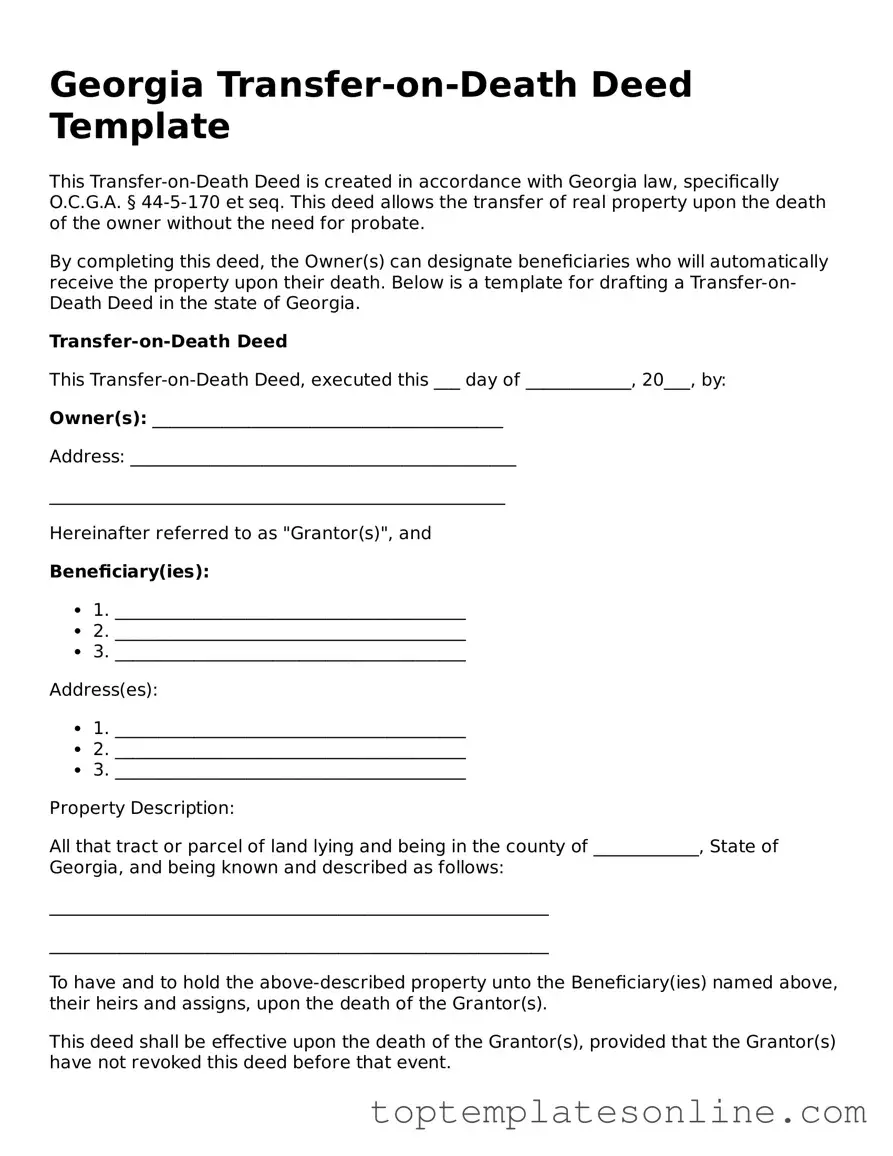Blank Transfer-on-Death Deed Template for Georgia State
A Georgia Transfer-on-Death Deed form allows property owners to designate beneficiaries who will receive their real estate upon the owner's death, bypassing the probate process. This legal tool provides a straightforward way to transfer property, ensuring that loved ones inherit without unnecessary delays or expenses. Understanding this form is essential for effective estate planning in Georgia.
Customize Transfer-on-Death Deed Here
